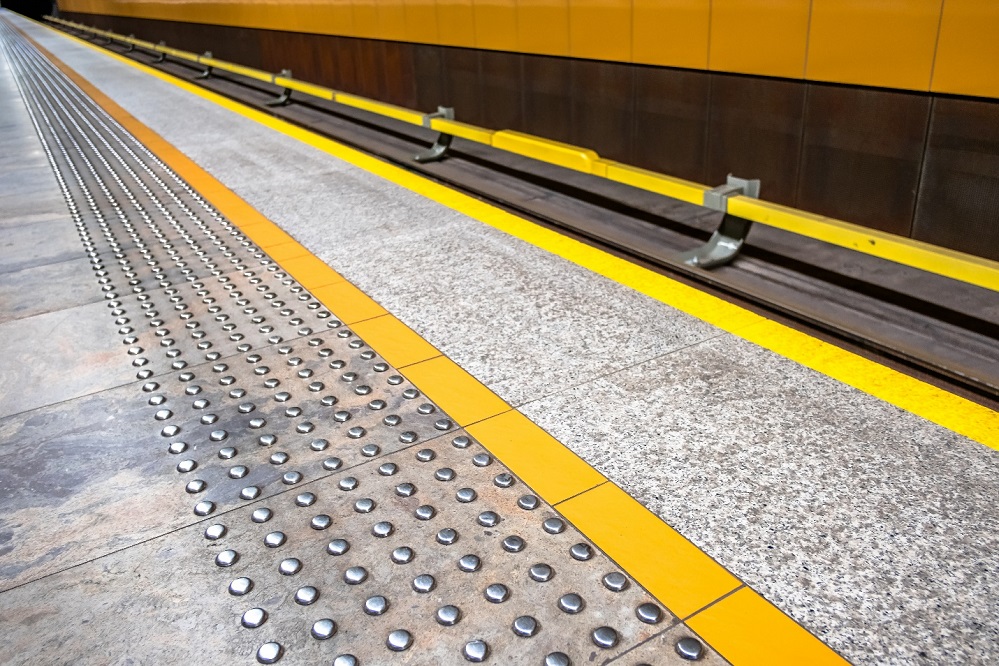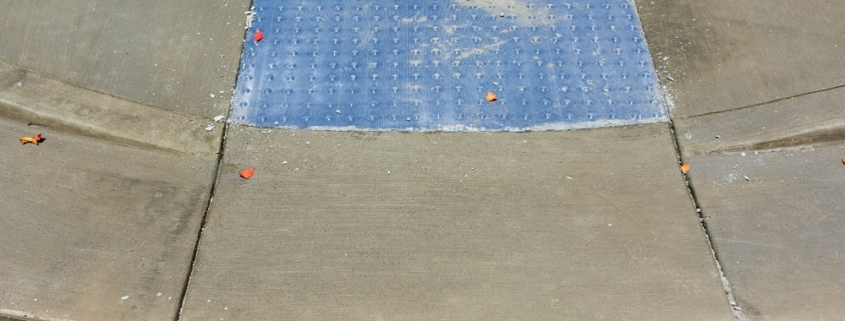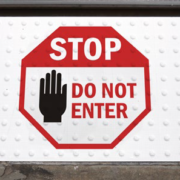Locations Where Tactile Surfaces Are Required
Detectable warning surfaces are required by the Americans with Disabilities Act (ADA). Federal guidelines require warning mats to be of a minimum size and for truncated domes to meet specific diameter, height, and spacing requirements. These surface-mounted truncated domes can be felt through a cane, walker, wheelchair, or a person’s feet.
Among the most important ADA requirements is where tactile surfaces should be located. To alert an individual of the edge of a walkable path and any potential oncoming traffic and other hazards, these should be placed at:
Curb Ramps
Cutting through a curb or built up to it, curb ramps let walker, scooter, or wheelchair users safely travel between the street and sidewalk. For a person who is visually impaired, identifying these transitions can be difficult. Therefore, detectable warning mats are required where the sidewalk meets the street, a curb indicates a crosswalk, or anywhere a ramp is located. On a sidewalk, truncated domes tell visually impaired individuals they are in a safe area or that moving traffic may be nearby.
Street Intersections
Tactile surfaces must be installed on curb ramps at street intersections. If the street or sidewalk was built pre-ADA, it will vary whether this is required. a municipality can install curb ramps at key pedestrian crossings to ease access to accessible building entrances and to and from accessible parking garages. At other nearby crossings and locations, it may choose to install curb ramps and detectable warning tiles, depending on whether other public facilities are nearby or if input from people with mobility disabilities suggests they are needed.
Transit Platform Edges

The ADA requires platform boarding edges without protective screens or guards to have tactile warning surfaces. Panels must be 24 inches wide for the entire length of a platform used by the public. Some warning systems use grooved lines. However, visually impaired people may not easily recognize these. Hard truncated domes are easily identifiable, even underfoot through the soles of one’s shoes, to alert someone of the platform edge and prevent them from falling onto the tracks.
Track Crossings
Truncated dome mats are required on sections of sidewalk approaching where the path crosses a train track. They must be far enough back to alert someone well before they could be in danger. In general, a distance of six to fifteen feet (from the center line of the nearest rail) is sufficient. It leaves enough room for a train gate to close, and it keeps the person far enough from a passing train.
Islands or Cut-Through Medians
A raised island at a crossing must be cut through and level with the street. Alternatively, it can have curb ramps at both sides. There also needs to be a level area of at least 48 inches long by 36 inches wide in the direction of the ramp’s running slope.
If you have any questions or uncertainties about truncated dome requirements or your facility’s need for detectable warnings, ADA Solutions can help. We offer numerous products with surface-mounted truncated domes that comply with the latest standards. Contact us today at 800-372-0519.









